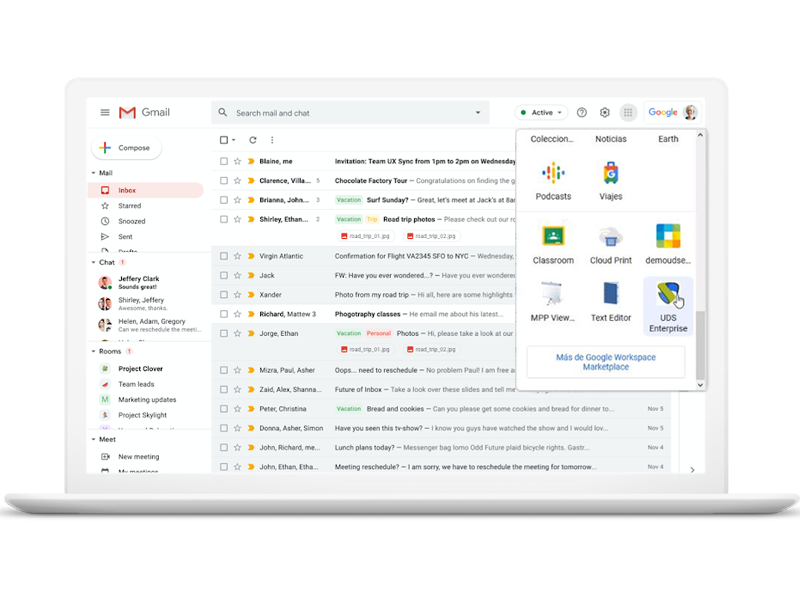This is just one way to access UDS Enterprise using the Google authenticator. It is also possible to enter through a Gsuite URL. If the UDS Enterprise web address is used, the system performs an automatic redirection to Google for the user to authenticate in that portal.
The really exciting thing is that this integration enables single sign-on between the two services. If a user is registered in Google Workspace, when he logs in to their Google account, the system will auto-login to UDS Enterprise so that he can enter directly into his VDI broker’s user dashboard. There, he will find the virtual desktops, applications, and remotely accessible devices managed and deployed by UDS Enterprise.
In addition to simplifying access for users, the improvements it introduces in terms of security are also noteworthy. As Google Workspace supports two-factor authentication (2FA), by integrating it with UDS Enterprise, this technology is applied directly to accesses to the VDI platform. As users are validated in Google Workspace to enter UDS Enterprise, the moment they enter their credentials in the login portal, the system will request the extra authentication that has been defined in Google. The 2FA mode may be any of those supported by Workspace: via token sent to the smartphone, to the email, voice call …
To enjoy the advantages of this integration, it is necessary to carry out a few simple configurations in Google and UDS Enterprise. The VDI broker team has developed a complete manual where all the steps to follow are detailed. It is available for consultation and download in the Documentation section of our website: Google Workspace user authentication in UDS Enterprise.
Apart from Google Workspace, UDS Enterprise is compatible with any federated authentication system based on SAML 2. There are other possibilities to enable two-factor or multiple-factor authentication in UDS Enterprise. Soon we will publish another article on our blog and social networks in which we will delve into this matter. Stay tuned!








0 Comments